
powered by  bravenet.com
|
Website search technology courtesy
FreeFind.com
Poverty and Despair: The Failed Policies & Human
Rights Violations directed against Native Americans
Origins of Violence
-
2
Recognizing a Native American Holocaust
Prologue
Before Columbus
Pestilence and Genocide
Sex, Race and Holy War
Epilogue
Excerpt from The Destruction of the Indies
by Las Casas
Examining the Reputation of
Christopher Columbus
Christopher Columbus, Marrano and Mariner
Christopher Columbus Jewish and New Christian
Elements
Christopher Columbus and the Indians
Columbus My
Enemy
The Native American Discovery of Europe before
Columbus
Columbus exposed as iron-fisted tyrant who
tortured his slaves
Columbus Day -The white man’s myth and the Redman's
Holocaust
How Lincoln's Army 'Liberated' the Indians
Lincoln Targeting Civilians Is a War Crime
Massacre at Sand Creek
Wounded Knee Hearing Testimony
An Ojibwe Trail of Tears
Wisconsin Trail of Tears
Ojibwe Creation Story
Paleo-American Origins
Myth of the Ten Lost Tribes of Israel
Tracing the Path of Violence: The Boarding School
Experience
The Wallum Olum: a Pictographic History of
the Lenni Lenape, Root Tribe from which the Ojibwe arose
A Migration Legend of the Delaware Tribe
Wallum Olum: The Deluge
-
Part II
Winter Count: History Seen from a Native
American Tradition -
2 -
3
The Story of the Opposition on the Road to
Extinction: Protest Camp in Minneapolis
Who Deems What Is Sacred?
Savage Police
Brutality vs Nonviolence of the People
Mendota Sacred Sites - Affidavit of Larry
Cloud-Morgan
Cloud-Morgan, Catholic activist, buried
with his peace pipe
Larry Cloud-Morgan
and the Silo Pruning Hooks
Larry Cloud-Morgan:
Testimonies to a Great Soul
The Truth about Khazars -
2
Canadian Genocide of Indian Children by Church and
State-
2 -
3
Residential School Genocide: Why "Apology" Isn't
Enough
Canadian Prime Minister Harper Apologizes for
Residential School Abuse
Quantum Physics Leads Science Back to the Sacred Fire
Cultural Differences Can Lead to Misunderstanding

 Maritime
Pine Pycnogenol
is
the super-antioxidant that has
been tried and tested by over 30 years of research for many
acute and chronic disorders. The Ojibwe knew about it almost 500
years ago. Didn't call it that, though. White man took
credit. Maritime
Pine Pycnogenol
is
the super-antioxidant that has
been tried and tested by over 30 years of research for many
acute and chronic disorders. The Ojibwe knew about it almost 500
years ago. Didn't call it that, though. White man took
credit.
Seroctin--the
natural serotonin enhancer to reduce stress and depression,
and enjoy better sleep
Plant by Nature is Organic Gardening Nature's Way
Accelerated Mortgage Pay-off can
help you own your home in half to one third the time and save many thousands
of dollars.

Get gold and silver.
Protect your liquid net worth
with real Liberty Dollars in both gold and silver!
Listen to
American Indian Radio
while you surf
Indian Tribes and Termination
Ojibwe Art and Dance
Ojibwe Forestry and Resource Management
Ojibwe Homes
Ojibwe
Encampment on the Winnipeg River by Paul Kane
Interpreting the Ojibwe Pictographs of
North Hegman Lake, MN
Ojibwe Honor Creation, the Elders and
Future Generations
Ojibwe Indian Reservations and Trust Land
Ojibwe Language
Introduction to Ojibwe Language
Introduction to Ojibwe Noun and Pronoun Grammar
Introduction to Ojibwe Numbers
and Money
Introduction to Ojibwe Verbs
and Preverbs
Introduction to Ojibwe
Verb Grammar
Introduction to Ojibwe Command and Question Grammar
FREELANG OJIBWE DICTIONARY - free downloadable Ojibwe-English &
English-Ojibwe dictionary form
Freelang.net.
Ojibwe Snowshoes and the Fur Trade
Ojibwe Sovereignty and the Casinos
Ojibwe Spirituality and Kinship
The
Question of Quantum
-
2 -
3 -
4
Family, Community, and School Impacts on
American Indian and Alaska Native Students' Success
Construction and Symbolism of the Sweat
Lodge
Ojibwe Tobacco and
Pipes
Traditional Ojibwe Entertainment
 Museum-quality
willow animal effigies
of the Southwest
Archaic culture, art from a 4,000 year-old tradition by Bill Ott Museum-quality
willow animal effigies
of the Southwest
Archaic culture, art from a 4,000 year-old tradition by Bill Ott
Unique Cherokee Dream-Catcher
from basket-weavers' numerology by Catherine
Sundvall
Photo
Gallery
Traditional Life of the Ojibwe
Aurora Village Yellowknife
The Making of a Man
Little Dancer in the Circle
Friends in the Circle
Grass Dancer
Shawl Dancers
Jingle Dress Dancers
Fancy Shawl Dancer
Men Traditional Dancers
Powwow:
The Good Red Road
Crater Lake Photo Gallery
Crater Lake Landscape
Flowers of Crater Lake
Birds & Animals of Crater Lake
Gold Mantled Ground Squirrel
The Rogue River
Sacred Fire of the Modoc
Harris Beach Brookings Oregon
|
|
Columbus, My Enemy
A
Caribbean chief resists the first Spanish invaders.
By
Samuel M. Wilson
In
May 1497, the Taíno ruler Guarionex was enmeshed in a potentially
disastrous political situation. Five years had passed since the
strange and dangerous Spaniards first appeared on the northeast shore
of Hispaniola. For five years Guarionex had attempted to mediate
between the foreigners and his people and to maintain his power and
prestige among the other Taíno caciques, or chiefs, who were sometimes
his confederates, sometimes his competitors, in the complex political
terrain of the Greater Antilles.
Two years
earlier, Guarionex had witnessed the utter devastation the Spaniards could
wreak in battle. Together with the other chiefs in La Vega Real—the largest,
most fertile, and most densely populated valley on Hispaniola—he had set out
to destroy the small force of Spaniards. Tens of thousands of Taíno, perhaps
as many as one hundred thousand, had gathered from the largest chiefdoms on
the island. They faced only about 200 Spaniards. But in battle the fury of
the strangers had been awesome: twenty men with armored clothing had ridden
through his people on enormous animals, inflicting horrible wounds with
their lances and swords. Men on foot used terrifying weapons that exploded
fire. The Europeans’ large dogs ran before them and with uncontrolled
violence tore through the Taíno warriors. The Spaniards’ goal seemed to be
not merely to impress or subdue the Taíno or to embarrass the chiefs into
joining them as subordinates but to kill as many people as possible. Even
after the battle they tortured to death some of the most respected chiefs in
La Vega Real.
Soon
afterward, however, the foreigners’ ferocity strangely abated. They gave the
remaining chiefs remarkable presents—glass beads, copper bells, brightly
colored clothes. Faced with these powerful and unpredictable creatures,
Guarionex had agreed that he and his people would be their subjects. From
the Spaniards’ signs and the few Taíno words they could speak, Guarionex
understood that their leader, Columbus, demanded submission not to himself
but to some even more powerful chief who lived on an island of which
Guarionex had never heard. Guarionex further agreed that his people would
pay tribute in food, cotton, and gold. To placate the Spaniards, he offered
to plant fields stretching for more than 100 miles, from the north coast of
Hispaniola to the south. The Spaniards, however, appeared to want gold more
than anything else: they demanded that every man of fourteen or more years
give them one of their little copper bells full of gold every three months.
Gold was relatively plentiful in surface deposits on Hispaniola, and
although they valued it, the Taíno did not mine it extensively.
Still, the
Spaniards required more than tribute. Because the Spanish ships came so
infrequently and brought so little food, the colonists constantly roamed the
countryside demanding the hospitality of the Taíno villages. Sometimes
hundreds of Spaniards and the Indians that followed them would descend on a
village for a few weeks. They called for food and seemed to eat much more
than a Taíno would. And they did not eat just the food that was ready to be
harvested; they also ate the manioc that normally would have stayed in the
ground for another six months, and so after they left, famine followed.
By 1497,
after two years of epidemics and famine following the arrival of the
Spaniards, the other chiefs were pushing Guarionex to put up some
resistance. Guarionex was a coward, they argued; groups of Spaniards who
hated Columbus and his kin were living in Taíno villages and had promised to
help the Taíno in battle if they would rise up again. The Spaniard Francisco
de Roldán led a small army of dissatisfied Spaniards; he had told the chief
Marque that he would help drive the Spaniards out of Concepción de la Vega,
the fort that controlled the center of the island. Roldán promised that if
the Taíno won, the Spaniards would stop demanding tribute. His offer was
attractive to many of the chiefs in La Vega Real. Most of them were
subordinate to Guarionex in the Taíno hierarchy of social and political
status, but their opinions were extremely important.
The Taíno
world stretched more than 1,000 miles from east to west. Beginning more than
2,000 years before the arrival of the Spaniards, the ancestors of the Taíno
had moved into the Caribbean archipelago from the northeast coast of
mainland South America. They spoke a language (called Taíno) of the Arawakan
family, one of the most widely dispersed languages in South America. By
A.D.700, after occupying the Lesser Antilles and Puerto Rico, they had
pushed farther into the islands of the southern Bahamas and the western
Greater Antilles—Hispaniola, Jamaica, and Cuba.
The
ancestors of the Taíno were people of the tropical forest, who made their
living by growing manioc and other root crops and by hunting, fishing, and
collecting wild animals and plants. In the centuries of living in their new
home, however, the Taíno way of life had become distinctively Caribbean.
Ways of growing and collecting food had been adapted to island environments;
social and political institutions had emerged that allowed a dense
population to endure successfully in an island context. The sea served to
unite, rather than separate, the Taíno. The elaborate oceangoing canoes of
the chiefs could hold as many as 100 people, and voyages between islands
were routine.
In addition
to intermarriage between high-ranking lineages, the large chiefdoms of
Hispaniola and the other Greater Antilles interacted with one another
through a ball game. As in Mesoamerica and parts of South America, the Taíno
played the game on large, flat courts lined with stones or earthen
embankments. The game was played with a gum rubber ball, which could not be
caught or struck by a player’s hands or feet. For the Taíno, the game was
much more than sport: it was a focus for religious festivals, feasting,
trade, intermarriage, and the (relatively) peaceful resolution of conflicts.
Since the
ancestors of the Taíno had moved onto the islands of the western Greater
Antilles, the chiefdoms had been growing larger and more powerful. In 1492
Guarionex was one of the five most powerful chiefs on Hispaniola, ruling
tens of thousands of people scattered over hundreds of square miles. All the
villages of the central Vega Real—some seventy or more—were under his
control through stratified tiers of less powerful chiefs. Most of his many
wives had come from the highest status families of these surrounding
villages; his marriages helped forge the social and political bonds that
held the chiefdom together. Some of his wives were from even farther away,
from powerful lineages that ruled the other large chiefdoms of Hispaniola.
Among the
Taíno, a chief’s power was measured by his ability to convince others that
his authority sprang from his birth into a maternal lineage of high status,
his special relationship with supernatural spirits, and his political
acumen. But his position was vulnerable; he could be deposed by his brothers
or nephews or even by a member of another lineage. This, Guarionex greatly
feared. Despite misgivings that the rout of two years earlier would be
repeated, he lent his support to the planned uprising.
Even as
Guarionex was being pushed into battle by his confederates, Don Bartolomé
Colón, Columbus’s brother, learned of the impending uprising in La Vega
Real. He had heard of Roldán’s plan to join with the Taíno to take over the
fort at Concepción de la Vega. If Roldán succeeded, the pro-Columbus faction
would be cut in half—part would be in the coastal colony of Isabela and
other forts in the north, part in newly founded Santo Domingo and other
settlements in the south. Moving quickly with the 300 Spaniards he had with
him, Bartolomé came into La Vega Real from the south. His men reinforced the
fort, but they were still vastly outmatched by the surrounding
Guarionex-Roldán alliance.
In many ways
Bartolomé was the more capable of the Columbus brothers. He was described by
Bartolomé de las Casas, an important chronicler of the early contact period
in the New World, as “a man who was prudent and very brave, more calculating
and astute than he appeared, and without the simplicity of Christopher. He
had a Latin bearing, and was expert in all of the things of men. . . . He
was taller than average in body, had a commanding and honorable appearance,
although not as much so as the Admiral.”
As long as
the Columbus family was the dominant Spanish faction of Hispaniola,
Bartolomé was its de facto leader. He alienated members of rival factions to
a lesser extent than his brother and interacted more effectively with the
Taíno elite. In the two years since the first uprising in La Vega Real, he
had learned to speak some Taíno and had developed relationships with many of
the chiefs, including Guarionex. He knew that the Indian leaders were
becoming desperate.
As Bartolomé
moved into La Vega Real, Guarionex and his confederates were assembling and
preparing for battle. The allied chiefs were scattered in several villages
within the central valley. The situation was different from two years
earlier, when the Spaniards had so overawed the Taíno that no man could
stand before them. Now the Taíno understood the power of the swords and
horses, and the firearms had lost some of their terror. Moreover, they truly
felt that they had no other hope but to defeat the Spaniards.
The force of
fewer than 400 Spaniards at Concepción could not survive a determined attack
by thousands of Taínos. The fort’s small blockhouse could not even hold them
all, let alone allow them to withstand a siege. In the morning, the Taíno
would attack. Bartolomé realized that the situation was growing more
dangerous by the hour. He had been drawn into fighting the Indians in the
area where their strength was greatest, and if Roldán intervened, horses,
armor, and firearms would offer little advantage.
In a breach
of Taíno battle etiquette that was devastatingly effective for its novelty,
Bartolomé staged a midnight raid on the surrounding villages. His plan was
to capture many of the chiefs before they could attack in the morning. Small
groups of horses rode into the villages and carried off fourteen chiefs
before any defense could be organized. Bartolomé himself went into the large
village of Guarionex and took the chief back to the fort. Las Casas wrote
that “they killed many of the captured leaders, from those who appeared to
have been the instigators, not with any other punishment (I have no doubt)
except by burning them alive, for this is what was commonly done.”
The raid
threw the Taíno into chaos. Without their chiefs they were doubly lost.
Their leaders not only directed warriors in battle but also mediated between
the Taíno and supernatural spirit-helpers, who could bring them success. In
the morning, according to Las Casas’s account:
“Five
thousand men arrived, all without weapons, wailing and very upset, crying
bitter tears, begging that they be given their king Guarionex and their
other leaders, fearing that the caciques would be killed or burned alive.
Don Bartolomé, having compassion for them and seeing their piety for their
natural leaders, and knowing the innate goodness of Guarionex, who was more
inclined to put up with and suffer with tolerance the aggravations and
injuries done by the Christians, rather than think of or take vengeance,
gave them their king and other leaders.”
Compassion
it may have been, but Bartolomé and his men were still in the middle of
thousands of desperate people, and Roldán was still waiting in the wings.
Bartolomé knew that without the political organization the chiefs provided,
the tribute system would quickly collapse. Fate had cast Bartolomé and
Guarionex as strange allies, each dependent on the other for his authority
and survival.
This
partnership, however, was fragile. Famine and disease were unabated in the
villages, and among the Taíno the feeling of despair continued to grow.
Guarionex was unable to protect his people from either the tribute demands
of Columbus and the Crown or the unofficial demands for food and gold made
by the anti-Columbus faction of Spaniards. Increasingly, Guarionex was
viewed as a tool of the Columbus family, and his support from the other
chiefs, from the pro-Roldán faction, and from his own people began to
evaporate. He was able to maintain his position as a powerful chief for
little more than a year after the fourteen chiefs had been captured, but
then had to flee La Vega Real with his family.
Even then
Guarionex could not find safety, because Bartolomé, fearing that Guarionex
would return with an army, hunted him down in the mountains of northern
Hispaniola, where he had sought refuge. Guarionex and his people had been
hidden by Mayobanex, the most powerful chief in the northern mountains and
perhaps a distant kinsman of Guarionex’s. Bartolomé’s capture of Guarionex
brought about the destruction of this chiefdom as well, by the same strategy
used elsewhere—capture the chiefs as hostages to be ransomed (but not
released) in exchange for their peoples’ tribute payments. Guarionex was
held in chains at Concepción until 1502, when he was sent to Spain. His ship
sank in a storm, and he died along with all the ship’s crew.
The same
forces that combined to bring Guarionex’s rule to an end in La Vega Real
were acting on all the other chiefdoms on Hispaniola and, ultimately, on
others throughout the Greater Antilles. By 1500, most of the large political
structures that existed on Hispaniola in 1492 had collapsed. For the Taíno,
political disintegration and the decimation of the population occurred
simultaneously.
The impact
of the Europeans’ arrival was felt differently on other islands of the
Caribbean, just as it was in different parts of the New World. Ponce de
León’s conquest of Puerto Rico began in the early 1500s and quickly brought
about the destruction of the Taíno way of life there. On Cuba the first
Spanish attempt at colonization was less intense, in part because no gold
was found, and in part because the discovery and conquest of Mexico diverted
the attention of Spanish fortune seekers. Indian populations there were not
completely destroyed. In the eastern Caribbean, the Carib Indians were
largely bypassed by early colonizers. Their descendants survive today as the
Garifuna of Central America, although their preconquest island culture has
been transformed greatly through five centuries of interaction with Africans
and Europeans.
The
indigenous societies of North, Central, and South America survived the
arrival of Europeans with different degrees of success in what we have come
to view as the remote “contact period.” Five hundred years, however, is a
short fragment of human history. We are still negotiating the coexistence
and synthesis of peoples with African, European, Asian, and Native American
ancestries and heritages. Guarionex’s struggle to retain his political
status, to navigate the treacherous early years of the Spanish conquest, and
ultimately to save his own life is just one story in this continuing
process.
White Eagle Soaring: Dream Dancer of the 7th Fire

Index of DreamCatchers
However You Spell DreamCatcher
However you've spelled Dream Catcher, these REAL Dream Catchers are
natural magic from Creator Direct (Manidoog).

This is a crazy world. What can be
done? Amazingly, we have been mislead. We have been taught that we can
control government by voting. The founder of the Rothschild dynasty, Mayer
Amschel Bauer, told the secret of controlling the government of a nation
over 200 years ago. He said, "Permit me to issue and control the money of
a nation and I care not who makes its laws." Get the picture? Your freedom
hinges first on the nation's banks and money system. That's why we
advocate using the
Liberty Dollar, to understand the
monetary and banking system. Freedom is connected with
Debt Elimination for each individual. Not
only does this end personal debt, it places the people first in line as
creditors to the National Debt ahead of the banks. They don't wish for you
to know this. It has to do with recognizing WHO you really are in
A New Beginning: A Practical Course in Miracles.
You CAN
take
back your power and
stop volunteering to pay taxes to the collection
agency for the BEAST. You can take back that which is yours,
always has been yours and use it to pay off your debts. And you can send
others to these pages to discover what you are discovering.
 Get
a course to promote your business online, explode your sales Get
a course to promote your business online, explode your sales
 Get
software to promote your business online in less time Get
software to promote your business online in less time
Get
software to streamline your business and run it hands free.
Disclaimer: The
statements on www.real-dream-catchers.com have not been evaluated by the FDA.
These dream catchers are not intended to diagnose nor treat nor cure any
disease or illness
© 2007, Allen Aslan Heart / White Eagle Soaring of the Little Shell Pembina Band, a
Treaty
Tribe of the Ojibwe Nation
|
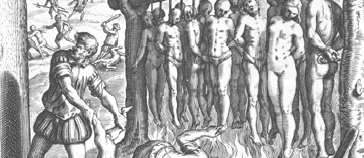
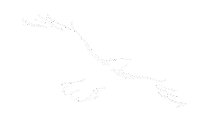
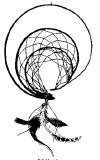
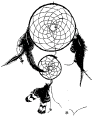
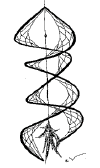



 Museum-quality
Museum-quality

 Get
a course to promote your business online, explode your sales
Get
a course to promote your business online, explode your sales Get
software to promote your business online in less time
Get
software to promote your business online in less time